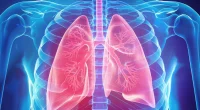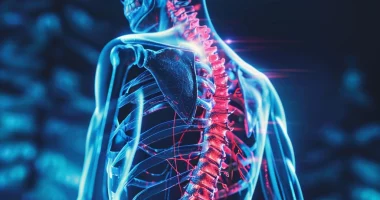Choledocholithiasis
What’s that?
Choledocholithiasis is a condition with concretions in the bile duct (ductus choledochus).
About the disease
Choledochus, or common bile duct, is formed after the merger of the vesicular duct (through which deposited bile comes from the gallbladder) and hepatic duct (which carries newly formed bile in hepatocytes). Choledochal stones are often secondary, forming in the gallbladder and then migrating into the duct. In about 15% of cases, primary formation of concrements directly in the choledochus is possible, which is facilitated by stagnation of bile content.
The main symptoms of choledocholithiasis are periodic pain localized in the epigastrium or right subcostal region and often associated with dietary errors. Against the background of obstruction of bile ducts, there are symptoms of mechanical jaundice – jaundice of skin and mucous membranes, nausea and vomiting, and skin itching. Mechanical jaundice can have a wavy course – it appears and subsides, associated with stone flotation.
Diagnostic signs of choledocholithiasis are usually elevated liver enzymes (AST, ALT, alkaline phosphatase, and gamma-glutamyl transpeptidase) and bilirubin. A transabdominal ultrasound scan is performed to visualize the concretions. The method also allows you to detect the dilation of extrahepatic bile ducts. If ultrasound is uninformative against the background of clinical and laboratory signs of exacerbation of cholelithiasis, more sensitive studies (CT, MRI) are performed.
The treatment of choledocholithiasis is to remove the stones using endoscopic instruments.
Types of choledocholithiasis
Classification takes into account the nature of the concretions. The following types of choledocholithiasis are distinguished:
- cholesterol;
- bilirubin, which may be accompanied by the formation of black-pigmented concretions (composed primarily of bilirubin) or brown-pigmented concretions (composed of bilirubin and bile fats).
Symptoms of choledocholithiasis
The disease usually begins with the appearance of moderate persistent pain in the epigastric region and right subcostal area. They can be of acute or increasing character. After a while, intense or non-intense jaundiced coloration of skin and sclerae, dark urine, discolored feces, tendency to liquid stools, increasing weakness, malaise, and decreased appetite are noted. Nausea, vomiting, and increased body temperature are not constant signs. Abdominal pain periodically subsides but then resumes again. The onset of the disease is often associated with the nutritional factor.
When cholangitis develops, body temperature rises, general condition suffers, and mental state changes. If the choledochus is blocked at the flow level into the duodenum after its connection with the pancreatic duct, symptoms of pancreatitis may develop. Pancreatic pain is localized in the epigastric region and, like a belt covering the abdominal cavity’s middle floor, has a continuous character (compared with colic in choledocholithiasis) and irradiates to the back. Nausea and vomiting are not uncommon companions of this disease.
Causes of choledocholithiasis
The appearance of stones in the choledochus can have a different origin. Most often, they migrate from the gallbladder. Stones are moved due to increased pressure in the gallbladder and increased contractile function of its walls.
Less frequently, stones form directly in the common bile duct. The causes of choledocholithiasis may be the following:
- bile stasis;
- inflammation of the ducts (cholangitis);
- primary sclerosing cholangitis;
- strictures formed after inflammatory diseases and manipulations.
Gallstone disease is more common in female patients, pregnant women, elderly patients, and patients with high serum lipid levels.
Even more rarely, concretions form in the intrahepatic bile duct (this condition is called primary hepatolithiasis).
Diagnosis of choledocholithiasis
According to clinical guidelines, the diagnosis of choledocholithiasis begins with an objective examination and palpation of the abdomen. In this case, pain is detected in the upper floor of the abdominal cavity on the right side. The following examination stage is laboratory screening – general clinical and biochemical blood tests are performed. Increasing the total and direct bilirubin level and liver enzymes usually indicates choledocholithiasis. These signs usually reflect the severity of mechanical jaundice, which is often wavy (due to floating nodules).
The next stage of the diagnostic search is visualization of the nodule with the help of instrumental diagnostic methods.
- Ultrasound is currently considered a screening method for suspected mechanical jaundice. The main signs on ultrasound are the detection of gallstones and biliary tree dilation, the severity and prevalence of which correlate with the magnitude of intraductal pressure and are determined by the level of biliary tree obstruction and its duration. However, the sensitivity of ultrasound scanning in choledocholithiasis is much lower than in the presence of concrements in the gallbladder.
- CT without contrast can detect stones 1-2 mm in size. However, “soft,” calcium salt-free bilirubin or cholesterol concretions can be detected only with intravenous contrast.
- Magnetic resonance cholangiography is the most sensitive and non-invasive method of modern diagnostics of choledocholithiasis. It is performed in case of insufficient informativeness of ultrasound and CT. Magnetic resonance cholangiography is considered to be the method of “choice” in the presence of symptoms of mechanical jaundice. One of its undoubted advantages is the absence of the need for contrast agent administration.
Treatment of choledocholithiasis
The pathogenetic treatment of choledocholithiasis is surgical intervention, which eliminates the obstruction of the common bile duct.
Conservative treatment
Conservative treatment is used at the stage of preparation for surgery. Therapy aims to restore water-electrolyte balance, reduce pain, and correct associated conditions.
Surgical treatment
Currently, endoscopic interventions with sphincter dissection in the area of the duodenal papilla where the choledochusopens, followed by extraction of the nodule, are the mainstay of care in patients with choledocholithiasis.
Retrograde cholangiopancreatography can be performed under general anesthesia. The patient is in the supine or left-side position, although the prone position is the most common. The physician inserts the duodenoscope into the duodenum, advances the catheter, and guides it into the common bile duct. A sphincterotome is then used to dissect the papilla and extract the nodule.
Surgical removal is indicated if the stones are large, multiple, or lodged in the choledochus. Laparoscopic or open exploration of the common bile duct is necessary to remove any stones that endoscopic methods cannot remove.
Some patients may be indicated for cholecystectomy due to an increased risk of gallstones. It is decided on a case-by-case basis. However, cholecystectomy is not indicated for primary stones formed in the choledochus.
All these treatment options are available in more than 600 hospitals worldwide (https://doctor.global/results/diseases/choledocholithiasis). For example, Laparoscopic cholecystectomy can be done in 23 clinics across Turkey for an approximate price of $3.5 K (https://doctor.global/results/asia/turkey/all-cities/all-specializations/procedures/laparoscopic-cholecystectomy).
Prevention
To reduce the risk of biliary stone disease, it is recommended to reduce the consumption of animal fats, have a rational and balanced diet, and exercise regularly (hypodynamia creates conditions for stagnation and thickening of bile).
Rehabilitation
Rehabilitation after surgery is aimed at compliance with the principles of dietary nutrition. It is necessary to reduce the proportion of fats in the diet, increase the amount of vegetable fiber, and eat fractionally 5-6-7 times a day.



